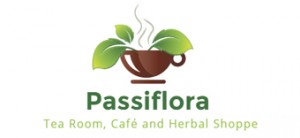Advantages of Nutritional Grasses
When we refer to nutritional grasses, known as cereal grasses as well, we are referring to the young, tender plants growing into cereal grains. At the same time you should note that it is at that stage not yet grains, as it is still growing into grains. It is one of the healthiest grass families, which include alfalfa, oat grass, wheatgrass, and barley grass. What is more – these grasses are gluten free.
Cereal grasses have been highly regarded by farmers since the 1930’s when they took notice of nutrition lacking in milk when it was not available to milking cows. Studies confirmed that cows produced nutrient filled milk and more eggs from hens who fed alfalfa, wheatgrass, and grasses in the cereal grass family. These grasses have numerous positive effects including enhancing metabolism, detoxifying blood and an alkalizing effect on bodily fluids and tissues.
It must be harvested at a critical point at jointing stage however as it loses most of its prime chlorophyll, amino acids and vitamins after this time. In order to extract the bountiful nutrition, two of the popular methods used are milling dried leaves or juicing it. For us humans it is impossible to chew, swallow, and expect the gastrointestinal system to digest it. When you consume these grasses its advantages are numerous and nutritional with its health benefits.
Look at some of the grasses and its values:
Alfalfa
- Natural antifungal
- Detoxify especially liver
- Alkalizes the body
- Eight essential amino acids
- Rich in nutrients and minerals
Oat Grass
- Natural blood cleanser and filled with chlorophyll
- Filled with Vitamin B5, Potassium, Phosphorus, Magnesium and Lecithin
- 30% Protein by weight
Wheat Grass
- Promotes healthy digestive tract
- Aids in cleaning liver
- Detoxify blood
- More Vitamin A that carrots
- More Vitamin C than oranges
Barley Grass
- 80mg Vitamin B12 per 100 gram
- Seven times the amount of Vitamin C compared to oranges
- Five times more Iron compared to spinach
- Eleven times the amount of Calcium when compared to milk
Sources :
